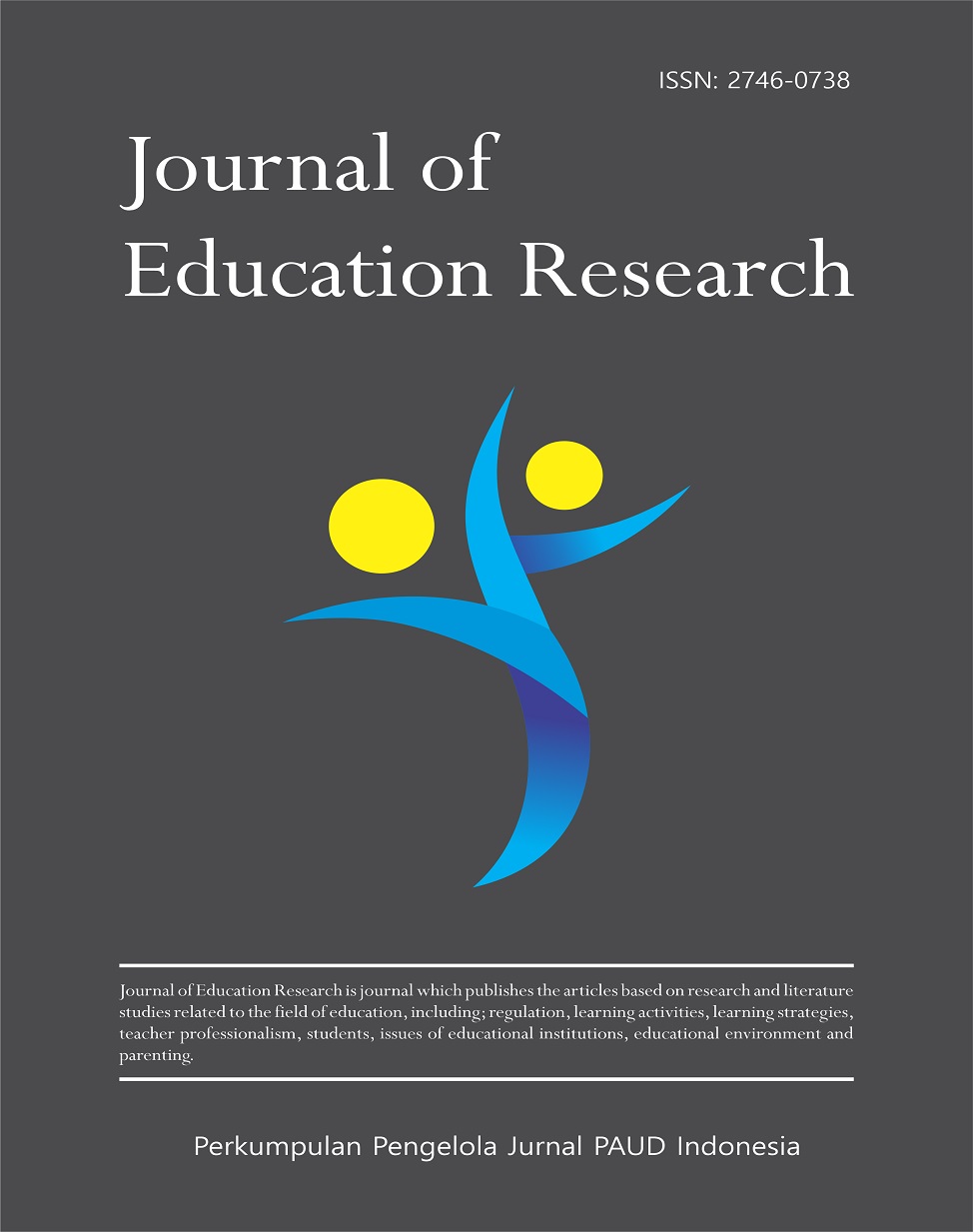Perbandingan Metode Deep Learning dalam Deteksi Kekerasan Fisik Berbasis Video: Studi Literatur pada CNN, RNN/LSTM, 3D-CNN, dan YOLO
DOI:
https://doi.org/10.37985/jer.v6i4.2180Keywords:
Deep Learning, Deteksi Kekerasan Fisik, CNN, RNN/LSTM, 3D-CNN, YOLO, Pengawasan VideoAbstract
Deteksi tindak kekerasan merupakan salah satu tantangan utama dalam pengembangan sistem keamanan berbasis teknologi, khususnya pada pengawasan video. Penelitian ini bertujuan untuk melakukan kajian literatur mengenai keunggulan, kekurangan, dan aplikasi dari berbagai metode kecerdasan buatan, yaitu Convolutional Neural Network (CNN), Recurrent Neural Network (RNN)/Long Short-Term Memory (LSTM), 3D Convolutional Neural Network (3D-CNN), dan You Only Look Once (YOLO), dalam mendeteksi tindak kekerasan fisik. CNN dikenal efektif dalam mengenali pola visual statis, sementara RNN/LSTM unggul dalam analisis data sekuensial yang melibatkan aspek temporal. Di sisi lain, 3D-CNN menawarkan kemampuan untuk menangkap pola spasial dan temporal secara bersamaan dalam video, sedangkan YOLO menyediakan pendekatan real-time untuk deteksi objek, yang relevan untuk mendeteksi kekerasan dengan efisiensi tinggi. Studi ini membahas performa keempat metode berdasarkan parameter seperti akurasi, kecepatan, kompleksitas, dan kemampuan adaptasi terhadap data dunia nyata. Kajian ini diharapkan memberikan wawasan mendalam bagi pengembang sistem keamanan berbasis video dalam memilih metode yang paling sesuai untuk kebutuhan spesifik dalam mendeteksi tindak kekerasan fisik.
Downloads
References
Abdullah, M. S. N. bin, Karim, H. A., & AlDahoul, N. (2023). A Combination of Light Pre-trained Convolutional Neural Networks and Long Short-Term Memory for Real-Time Violence Detection in Videos. International Journal of Technology, 14(6), 1228–1236. https://doi.org/10.14716/ijtech.v14i6.6655
Bimantoro, F., Wijaya, I. G. P. S., & Aohana, M. R. (2024). Pendeteksian Kecurangan Ujian Melalui CCTV Menggunakan Algoritma YOLOv5. Seminar Nasional Teknologi & Sains, 3(1), 109–117. https://doi.org/10.29407/stains.v3i1.4360
Carita, S., & Hadiprakoso, R. B. (2023). Double Face Masks Detection Using Region-Based Convolutional Neural Network. 9(4), 904–911. https://doi.org/10.26555/jiteki.v9i4.23902
Dewi, N., & Ismawan, F. (2021). Implementasi Deep Learning Menggunakan Convolutional Neural Network untuk Sistem Pengenalan Wajah. 14(1), 34–43. https://doi.org/10.30998/faktorexacta.v14i1.8989
Fikri, A. D., Utaminingrum, P. F., & Edhi, E. G. (2023). Sistem Pendeteksi Kekerasan di Ruang Publik Menggunakan Metode 3D Convolutional Neural Network. 1(1), 1–6.
Informatics, A., Putri, S. A., Rifai, A., Nawawi, I., & Info, A. (2024). Aplikasi Cerdas Sistem Deteksi Tindak Kekerasan Fisik Untuk Pengawasan Perundungan Dengan Convolutional Neural Network. 7(2), 332–340.
Juliandy, C., Wong, N. P., Mikroskil, U., & Mikroskil, U. (2024). Modeling Face Detection Application Using Convolutional Neural Network and Face-API for Effective and Efficient Online Attendance Tracking. 9(1), 10–17. https://doi.org/10.15575/join.v9i1.1203
Lutfina, E., Setiawan, R. O. C., Nugroho, A., & Abdillah, M. Z. (2023). PERANCANGAN APLIKASI PEMBELAJARAN DENGAN KONSEP GAMIFIKASI Systematic Literature Review. METHOMIKA Jurnal Manajemen Informatika Dan Komputerisasi Akuntansi, 7(1), 78–87. https://doi.org/10.46880/jmika.vol7no1.pp78-87
Nafiz, M. F., Kartini, D., Faisal, M. R., Indriani, F., & Hamonangan, T. (2023). Automated Detection of COVID-19 Cough Sound using Mel- Spectrogram Images and Convolutional Neural Network. 9(3), 535–548. https://doi.org/10.26555/jiteki.v9i3.26374
Nasional, S., Elektro, T., Informasi, S., & Informatika, T. (2024). Sistem Deteksi Kekerasan. 198–204.
Network, C. N. (2024). Convolutional Neural Network and LSTM for Seat Belt Detection in. 5(158), 4–6.
Priharsari, D. (2022). Systematic Literature Review Di Bidang Sistem Informasi Dan Systematic Literature Review in Information Systems and Computer Engineering : a Guideline. Jurnal Teknologi Informasi Dan Ilmu Komputer, 9(2), 263–268. https://doi.org/10.25126/jtiik.202293884
Putri, H. M., Fadlisyah, F., & Fuadi, W. (2022). Pendeteksian Bahasa Isyarat Indonesia Secara Real-Time Menggunakan Long Short-Term Memory (Lstm). Jurnal Teknologi Terapan and Sains 4.0, 3(1), 663. https://doi.org/10.29103/tts.v3i1.6853
Putri, S. A., Rifai, A., & Nawawi, I. (2023). Physical Violence Detection System to Prevent Student Mental Health Disorders Based on Deep Learning. Jurnal Pilar Nusa Mandiri, 19(2), 103–108. https://doi.org/10.33480/pilar.v19i2.4600
Sanjaya, F. S., Lutfina, E., Nugroho, A., & Abdillah, M. Z. (2023). Systematic Literature Review Perancangan Sistem Informasi Stok Opname Gudang Berbasis Web. Science Technology and Management Journal, 3(1), 21–27. https://doi.org/10.53416/stmj.v3i1.129
Sidik, G. A. (2024). Deteksi Tindak Kekerasan dan Perundungan Pada Anaka Berbasis YOLOv8 (You Only Look Once). 3(9).
Sistem, R., Citra, P., Jagung, B., Elektro, T., Magister, P., & Gunadarma, U. (2021). JURNAL RESTI Penerapan Convolutional Neural Network Deep Learning dalam. 1(10), 265–271.
Wajah, I., Deepfake, B., Metode, M., Mu, J., Adrezo, M., & Haikal, A. N. (2024). Identifikasi Wajah Asli dan Buatan Deepfake Menggunakan Metode Convolutional Neural Network Identifying Deepfake Generated Faces and Real Faces Using Convolutional Neural Network. 13(1), 45–50. https://doi.org/10.34148/teknika.v13i1.705
Downloads
Published
How to Cite
License
Copyright (c) 2025 Elpina Sari Dewi Hasibuan, Billy Hendrik

This work is licensed under a Creative Commons Attribution-ShareAlike 4.0 International License.
Authors who publish with this journal agree to the following terms:
- Authors retain copyright and grant the journal right of first publication with the work simultaneously licensed under a Creative Commons Attribution-ShareAlike 4.0 International License that allows others to share the work with an acknowledgement of the works authorship and initial publication in this journal.Â
- Authors are able to enter into separate, additional contractual arrangements for the non-exclusive distribution of the journals published version of the work (e.g., post it to an institutional repository or publish it in a book), with an acknowledgement of its initial publication in this journal.
- Authors are permitted and encouraged to post their work online (e.g., in institutional repositories or on their website) prior to and during the submission process, as it can lead to productive exchanges, as well as earlier and greater citation of published work (See The Effect of Open Access).









